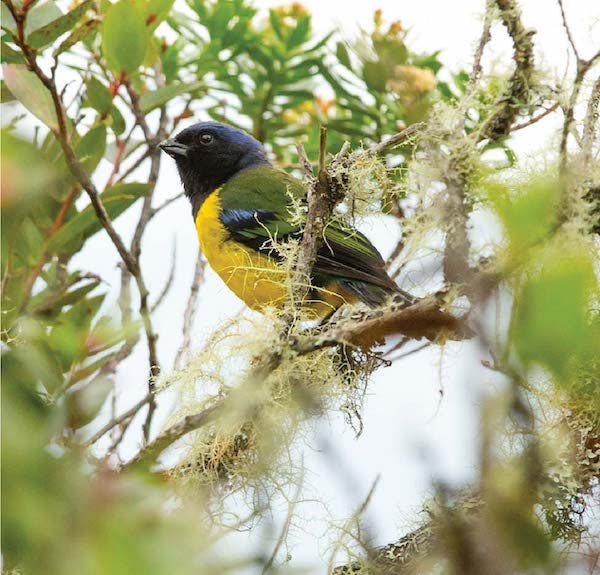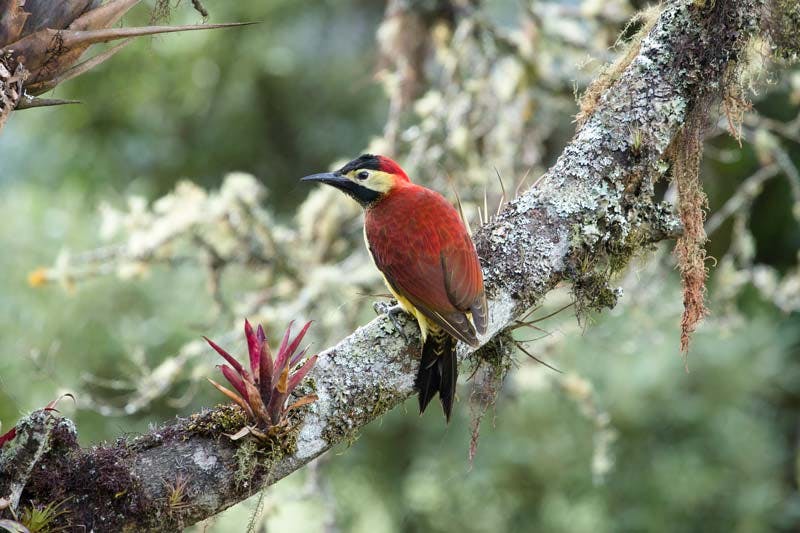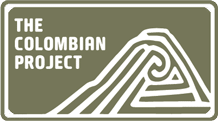COLOMBIA BIRDING
The word ‘Colombia’ sparks imagination and wonder when mentioned in birding circles. It is the mecca for neo-tropical birding, being home to over 1,950 recorded species with more being found all the time as the country’s vast territory is explored during this time of transition and peace.
This startling amount represents close to 20% of the world’s total number of birds. Among this mouth-watering list there are at least 84 ‘country endemics’ found in Colombia’s various isolated geo-regions and ecosystems, the evolutionary results of the complex and extreme Andean topography, its role as the bio-bridge between North, Central and South America and its 1,000-mile Caribbean and Pacific coastlines.
To capture and showcase this astounding avian treasure trove, we are delighted to introduce our latest array of The Colombian Project Birding experiences – the culmination of years of hard work, experience in the birding sector and our dedication to bird observation, conservation and exploration.
BIRDING IN COLOMBIA
Birding in Colombia involves visits to a wide range of private reserves, national and regional parks, farms and private properties. Road connections are very good to excellent between major cities thanks to the construction of new 4G highways, with most secondary and tertiary (unpaved) roads in good condition. Major cities are never too far away from the main birding sites meaning that connections by both road and air are easy to coordinate. Infrastructure is generally excellent in the cities with it understandably lowering in * level the more remote you go. That said, the lodgings we offer are clean and comfortable complete with private bathrooms – thankfully these are abundant and getting better all the time as Colombia’s tourism sector strengthens.
COLOMBIA’S DIVERSITY EXPLAINED’
Colombia’s stunning mega-diversity, summed up simply as being second only to Brazil, a country which is 7 times the size, can only be depicted if you understand its geography.
Starting with the mountains, an Andean knot enters the country from Ecuador and after 100km or so splits into 3 Andean chains – Western, Central and Eastern.
The Central Andes, volcanic in its creation and punctuated by glacier-capped volcanoes along its length, is older than the Western, which was created by the Nazca plate subduction below the South American plate, noted for its large plateau or ‘altiplano’ on which the capital Bogota sits, reaching heights of over 5,350masl (17,500ft).
This colossal Andean landscape or region is itself divided by two major rivers, the Cauca and Magdalena that nestle in two massive, fertile, tropical inter-Andean valleys. ‘Las Cordilleras’ essentially split the even vaster Amazon basin with the lowland tropical forest of the Pacific or ‘Choco’ biogeographical region that stretches from the jungles of the Darien down to northern Ecuador. Here it is important to highlight that Colombia has not one but two major rainforests, with the jungles of the Pacific plain (‘Choco region’) being more diverse per KM/sq than its Amazonian counterpart.
Bordering the northern edge of the Amazonian plain the Guaviare River roughly separates the basin to Colombia’s other large, flat expanse. Here the tropical savannas of the ‘Llanos’ (plains) are the result of acidic soil and a climate that leaves it with a harsh, long dry season between November to April. During the wet season large areas of the Llanos are flooded providing the backdrop to the original Colombian cowboys – ‘Los Llaneros’. This immense, flat grassland drains to the Orinoco River and stretches deep into Venezuela.
To the north, along the Caribbean, 1,000 miles or 1,600km of coastline stretch from the Darien to the northernmost tip of South America – La Guajira peninsula and desert on the border of Venezuela.
Most special of all, is the topographical accident that is the Sierra Nevada de Santa Marta, Colombia’s highest mountains that tower at over 5,700masl or 18,700ft. These snow covered peaks lie just 50km from the stunning beaches and jungles of Tayrona national park, as the crow flies. This island of evolution leads us on to our conclusion.
Colombia’s collection of snow-covered mountains and their various climatic zones, its lush valleys, endless plains, impenetrable forests, arid deserts and endless coastlines are all part of a diverse geography formed over millions of years. This unique geography has enabled Colombia to shelter an equally unique diversity of avian fauna, perfectly adapted to its unique surroundings. Colombia is the land of birds, but not by chance. This section, dedicated to the country’s ecoregions – Andean, Pacific, Amazon, Llanos and Caribbean – will explain why.

ITINERARIES - WHAT YOU NEED TO KNOW
We’ve included 10 of our most popular itineraries below. Our tours cover large swathes of the country and showcase relatively new birding areas, such as Inirida and the Southern Andes/Colombian Massif, both of which are quickly becoming havens for birders, full of stunning jewels that are essential ticks on any life list.

A SMALL SELECTION
These itineraries are a small selection of the various birding tours that we offer and it’s worth mentioning that we operate Colombia as a whole –there is no known region or site that we do not visit and we are always searching for more sites so that we are at the forefront of the very best birding experiences in Colombia.
TAILOR MADE
All tours are suitable for groups or independent travelers and can be changed, adapted or modified in line with your specific requirements, such as budget, time, travel style, specific target list etc. There’s nothing we like better than create and mould a tour to your exact needs and wants.
SMALL GROUPS
We don’t do large groups for our birding tours. In fact, we don’t do large groups for any of our tours as it’s not what we’re about. We keep group sizes small to ensure a more personalized experience, with more contact time with the tour leader and of course, much better opportunities for field sightings of the various species.
A QUICK GUIDE TO OUR ITINERARIES
A brief description of the tour as a whole with some juicy tit-bits of information that you should know.
